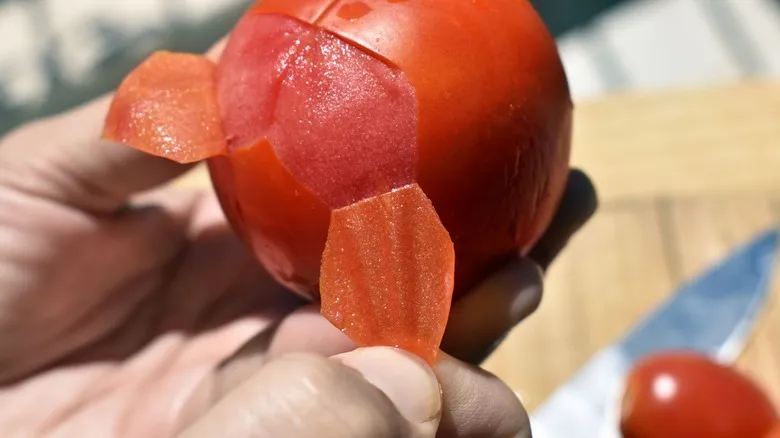To peel or not to peel tomatoes

It's common to find yourself peeling tomatoes out of habit, but is it truly necessary? If the dish you're making requires a smooth consistency, such as tomato sauce, jam, or soup, then opting for skinless tomatoes is the way to go. The skin tends to become tough during cooking, resulting in a coarse texture in the final product. Additionally, tomato peels can develop a bitter taste when cooked, which can clash with the sweet flavor you desire. Therefore, for a sweet, smooth result, it's best to peel your tomatoes beforehand.
However, there are situations where leaving the skin on is preferable. For instance, when preparing a sandwich, it's better to keep the tomato slices whole, as the skin helps maintain their structure. Moreover, there are nutritional advantages to leaving the tomato peel intact. The peels are rich in a vital antioxidant called flavonol, which can help lower the risk of heart disease and high blood pressure. If you're interested in obtaining these nutrients, you might consider keeping the peels. Alternatively, you can peel the tomatoes and save the skins for future use.
How to use tomato peels

If you need to remove the skins from your tomatoes before cooking but want to retain the nutrients found in the skin, there's an easy solution. Simply save the tomato peels for future culinary uses. For instance, you can freeze the skins and later use them to create a flavorful stock. To do this, simmer the peels with other vegetable scraps, such as onion trimmings, carrot ends, and herbs, until you have a rich liquid. Afterward, strain out the solids and use the broth as a tasty base for a unique twist on classic tomato soup.
Another option for utilizing tomato skins is to transform them into a crunchy topping that enhances your salads and soups. Start by frying the skins in a bit of oil until they become crispy. You can also enjoy these tomato chips as a snack on their own—delicious!
Additionally, you can dehydrate the tomato peels in the oven at a low temperature until they are completely dry. Once dried, crush them into a fine powder. This powder can be sprinkled on various dishes to add a subtle sweet and tangy tomato flavor.
Recommended

Follow The Silk Test To Buy The Best Corn For Grilling

How To Make Marshmallows With Just 3 Ingredients

How To Easily Make Pasta Dough

Graham Cracker Soup: The Comforting Breakfast That's Only 3 Minutes Away
Next up

